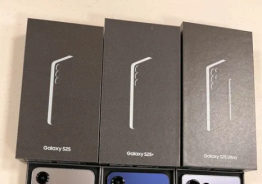HTC announced the availability of its Droid DNA on Nov. 13 at a press event, and claims it is the "ultimate smartphone." Samsung on the other hand is raking in laurels by the dozen with its Galaxy S3 winning the best smartphone award at function in the UK, and notching up the 30 million sales milestone in just a few months of its release.
With HTC's Droid DNA claiming to push the envelope and Jason Mackenzie, president, HTC Corporation proclaiming that "the DROID DNA by HTC is sure to top wish lists this holiday season," it will be interesting to see how the smartphone space shapes up with the device's launch. The HTC Droid DNA's budget-friendly pricing coupled with high-end features could well be a deal maker for consumers.
Here's a look at how the Galaxy S3 and Droid DNA measure up against each other.
Processor
Both the devices pack in quad-core processors. The Droid DNA has a Qualcomm Snapdragon S4 Pro, which is clocked at 1.5GHz, whereas the Galaxy S3 features a 1.4GHz Exynos processor.
Display
The Galaxy S3 features a 4.8-inch HD Super AMOLED display, which is fractionally smaller than the Droid 5-inch IPS LCD display. The Galaxy S3 has a pixel resolution of 1280 x 720 versus Droid DNA's 1920 x 1080 pixels.
HTC asserts that its Droid DNA is notably the first smartphone to "feature a true 1080p HD super LCD 3 display with Corning® Gorilla® Glass 2 protection."
Additionally, the Droid DNA wallops the Galaxy S3 with its impressive pixel density of 440 pixels per inch (ppi) vis-à-vis the latter's 306 ppi. HTC claims the Droid DNA "delivers the maximum pixel clarity available on a smartphone."
Dimensions
The Galaxy S3 measures 5.38 x 2.78 x 0.35 inches and the Droid DNA measures 5.63 x 2.80 x 0.38 inches, making the latter taller, slightly wider, and thicker than the former.
Weight-wise, at 4.69 ounces, the Galaxy S3 is lighter than the 4.87 ounces of the Droid DNA.
Storage and Memory
The Galaxy S3 clearly edges out the Droid DNA when it comes to storage. The Galaxy S3 is available in 16/32/64 GB on-board storage options, whereas the Droid DNS is available only in 16GB variants. Additionally, the Galaxy S3 has an expandable memory option (of up to 64GB) via a microSD card, unlike the HTC offering.
However, with its 2GB of RAM vis-à-vis 1GB of RAM, the Droid DNA trounces the Galaxy S3 by offering double the memory.
Software
The Galaxy S3 come pre-loaded with Android 4.0 Ice Cream Sandwich (ICS), which has been updated to Android 4.1 Jelly Bean in many countries. On the other hand, the Droid DNA comes with the Android 4.1 Jelly Bean out of the box.
Battery
When it comes to battery both the smartphones are evenly matched. A 2100mAh battery (removable) powers the Galaxy S3 which supports 10.8 hours (on 3G) of talk time. The Droid DNA is fueled by a 2020mAh non-removable battery. It is not yet known how much talk time it supports.
Camera
Both the smartphones have an 8-megapixel rear-facing camera. However, the Droid DNA has a slightly better front-facing camera with 2.1 megapixels, compared to the Galaxy S3's 1.9-megapixel one.
Availability and Pricing
The Droid DNA is available for $199.99 on a two-year contract on Verizon from Nov. 21, with the option to pre-order the device now. The Galaxy S3 is available for $199 and $299 with a two-year contract.
With the holiday season knocking at the doorstep it will be interesting to see which smartphone tops the consumer wishlist. Whether HTC's President Mackenzie's prediction comes true remains to be seen. For now, Samsung can rest on its laurels and breathe easy.
© Copyright 2025 Mobile & Apps, All rights reserved. Do not reproduce without permission.

















